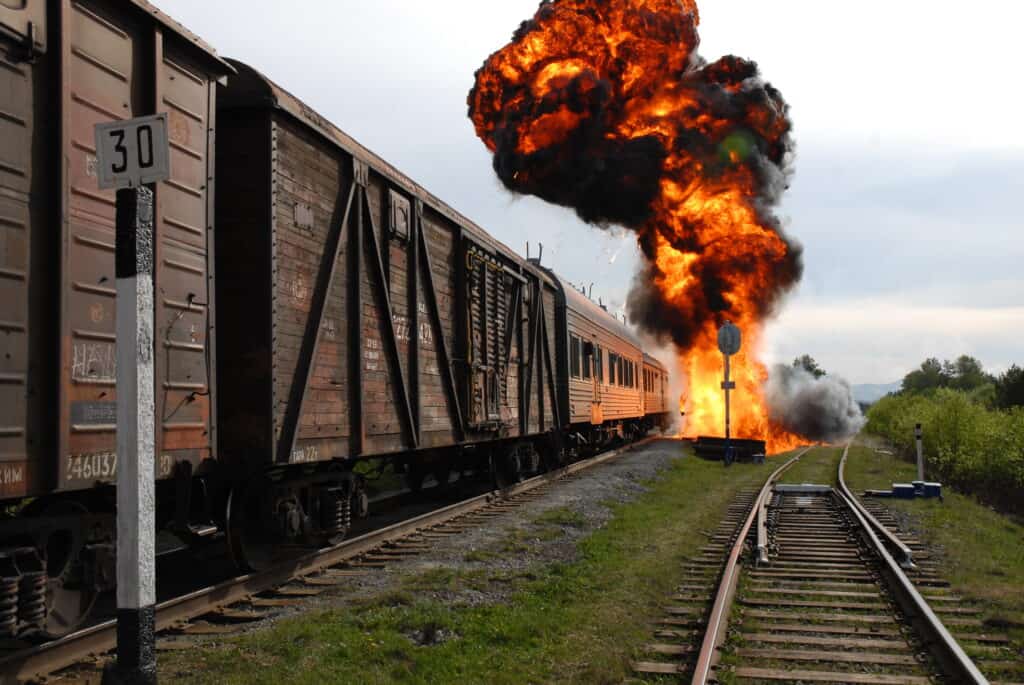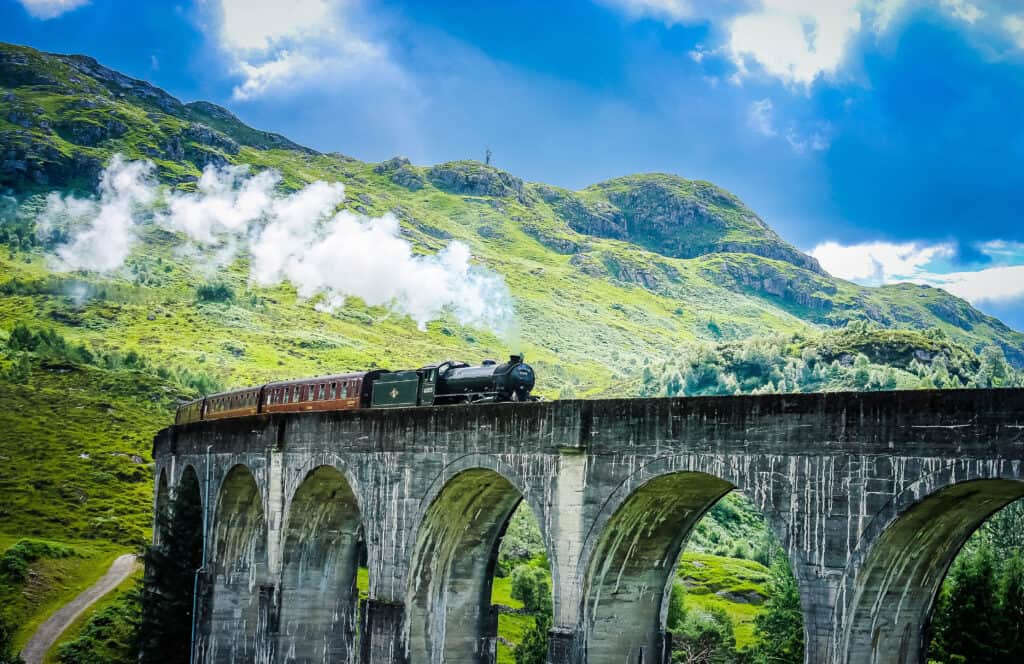Train rides can be beautiful, taking you along with the rhythmic sound of the wheels meeting the tracks as you take in scenery ranging from city life to nature scenes, depending on the location. Just as there is a lot to be appreciated about a train ride, the aftermath of a train derailment can be so horrific, that you have to avert your eyes. The United States is home to some beautiful scenery and amazing train rides but it’s also where some of the deadliest train derailments have taken place. Below, we cover the five deadliest accidents that left many dead, thousands in shock, and that have forced train engineers and conductors to take extra safety measures to keep their passengers safe, whether it’s a short trip or a long trip.
1. Malbone Street Wreck
The Malbone Street Wreck happened on a train that served as a transportation system for busy New Yorkers. On any given day, this train was packed with engineers, company clerks, and even a naval aviator who was on his way to France. Most of these people worked in either downtown Brooklyn or Manhattan and when the train crashed, it was unfortunately during rush hour. The crash occurred at exactly 6:42 PM. The driver of this train was inexperienced and as the train made its way toward Brighton Beach, it traveled much too quickly through the tunnel just under Brooklyn’s Malbone Street. There were five cars total and all of them were packed with passengers.
On this day, 93 people perished. People suffered many injuries, including broken legs, fractured skulls, and lacerations across their faces. Since the train had been traveling much too quickly, the second and third cars of the train crashed straight into the tunnel’s walls. Those tunnel walls were made of steel and concrete, so you can imagine the impact. Pieces of metal and wood shut up from the bottom of the train cars, impaling some passengers and completely obliterating others.
When firefighters arrived at the scene, they had to use ladders to make their way down to the wreckage. They encountered many people who were strewn about on the concrete, in shock, and injured. Survivors who managed to get out of the wreckage with only minor injuries fled the scene. It wasn’t exactly panic that led to them fleeing, rather, it was that what they had just experienced and were left to witness was so horrible, that they couldn’t stand it. Some people who had watched what happened approached those who were dying to offer them comfort in their last moments. To this day, this train wreck remains one of the deadliest train derailments in United States history.

93 People Perished in The Malbone Street Wreck in Brooklyn
©I WALL/Shutterstock.com
2. The Great Train Wreck of 1918
The Great Train Wreck of 1918 was a tremendously unfortunate accident in Nashville, Tennessee that happened on July 9, 1918. The time was 7:20 AM and the type of incident was a collision. This wasn’t a single train that derailed, rather, it was a collision with another oncoming train. The cause of this train crash was unfortunately human error and involved two passenger trains that were operated by the Nashville, Chattanooga, and St. Louis railway. On this day, 101 people perished. 171 other people were injured.
This train wreck remains the deadliest rail accident in United States history. One of the trains was scheduled to depart Nashville for Memphis, Tennessee at 7 AM, and the other train was scheduled from Memphis which was about half an hour late for a scheduled arrival in Nashville at exactly 7:10 AM. Literally 10 minutes later at 7:20 AM, these two trains that were headed in opposite directions collided when they were traversing a part of a single track that is known as the Dutchman’s curve.
The death reports were inconclusive with the Interstate Commerce Commission listing the total number of dead passengers at 101 while other reports listed them as high as 121. Nevertheless, more than 100 people were injured and killed. These wooden trains held many African-American laborers who departed from Arkansas and Tennessee and were working at the gunpowder plant in Old Hickory, which is just outside of Nashville. The rescue efforts were overwhelming with at least 50,000 people who arrived at the track to help survivors, find their loved ones, and offer prayers for all those affected.

The Great Train Wreck of 1918 killed or injured nearly 300 people
©DariaZ/Shutterstock.com
3. The Ashtabula River Railroad Disaster
The Ashtabula River railroad catastrophe occurred on December 29, 1876, when a bridge spanning the river near the town of Ashtabula, Ohio, in the United States, failed. The Pacific Express train from the Lake Shore and Michigan Southern Railway crossed the bridge as it was failing. All parts of the train, except for the lead locomotive, fell into the river. The train was equipped with oil lanterns and coal-fired heating stoves which immediately burst into flames, also setting all the wooden cars ablaze.
Unfortunately, firefighters did not move forward with extinguishing the flames, which just added to the chaos. Different individuals ended up having to try and pull the survivors from the wreck. Although there were survivors after the crash occurred, since there were no efforts to extinguish the flames, they did end up burning to death. Approximately 92 of the 160 passengers died that day. Up until The Great Train Wreck of 1918, this rail accident was considered the worst in US history.
The reason for this wreck was an improper design of the bridge by the railroad company president. It was very poorly constructed, and it was not adequately inspected. This was a tragic day for many and because it happened, a hospital was built in that town and a federal system was set up so that there could be proper, formal investigations for all fatal railroad accidents.

The Ashtabula River Railroad Disaster in 1879 was one of the worst in the United States
©Mikadun/Shutterstock.com
4. The Eden Train Wreck
The date was August 7, 1904, and the No. 11 Missouri Pacific Flyer was traveling from Denver, Colorado over to St. Louis, Missouri. This train was crossing over the Dry Creek Arroyo bridge, which is about 8 miles north of Pueblo, Colorado when it was hit by a massive flash flood. The flash flood wave hit the trestle, which completely cut off the front half of the train. 88 people were dragged to their deaths and 22 people went missing, with the rapids sending them a number of miles away from the accident site. Several other passengers passed away after the initial accident from their injuries.
Although the engineer did know about thunderstorms in the area, he still was unable to prevent the accident. He took precautions by slowing down the train to 10 to 15 miles per hour to make sure that he had enough time to stop in case there were washaways. After that large wave hit those first cars, the porter of the train pulled on the emergency air brakes. This single action is ultimately what saved the passengers who survived. About 29 people survived who were located in the back part of the train and a fireman who was on board was actually thrown from one of the cars and survived. After the flood waters receded, searchers were able to locate the bodies of the deceased as far as 22 miles down the Arkansas River.

The 1904 Eden Train Wreck was caused by a flash flood
©Janneke Timmerman/Shutterstock.com
5. The Wellington Avalanche Disaster
96 people total died as a result of the Wellington avalanche disaster. This crash occurred in the early morning of March 1, 1910. An avalanche was descending rapidly down Windy Mountain close to the Stevens Pass in the Cascade Mountains in the state of Washington. This avalanche was ruthless and took down two Great Northern trains. This is one of the worst natural disasters in Washington and it had the highest number of fatalities. These two Great Northern trains had already been waiting out a blizzard for six days. One of the survivors, Charles Andrews, shared his experience. He said he was walking toward one of the Wellington’s bunkhouses when he heard something strange. It sounded like a rumble. He saw how it advanced relentlessly exploding and roaring down the mountainside. He described the sound as “the crashing of 10,000 freight trains.”
There were only 23 survivors that day. One of the survivors was a train conductor who was sleeping in one of the mail train cars. He was thrown up onto the roof and then again down to the floor of the car a couple of different times as the train rolled. It ended up disintegrating completely when it slammed against a huge tree. Those 23 survivors had to be dug out over the following couple of hours. A lot of them were recovered with injuries. It took three weeks of repairs to get the tracks back in working order and because the name Wellington rendered awful memories of this catastrophic event, the small town of Wellington was renamed Tye.

The Wellington Avalanche Disaster only left 23 survivors
©Jerry Huddleston from Hampton, Minnesota, US / – Original / License
Thank you for reading! Have some feedback for us? Contact the AZ Animals editorial team.








